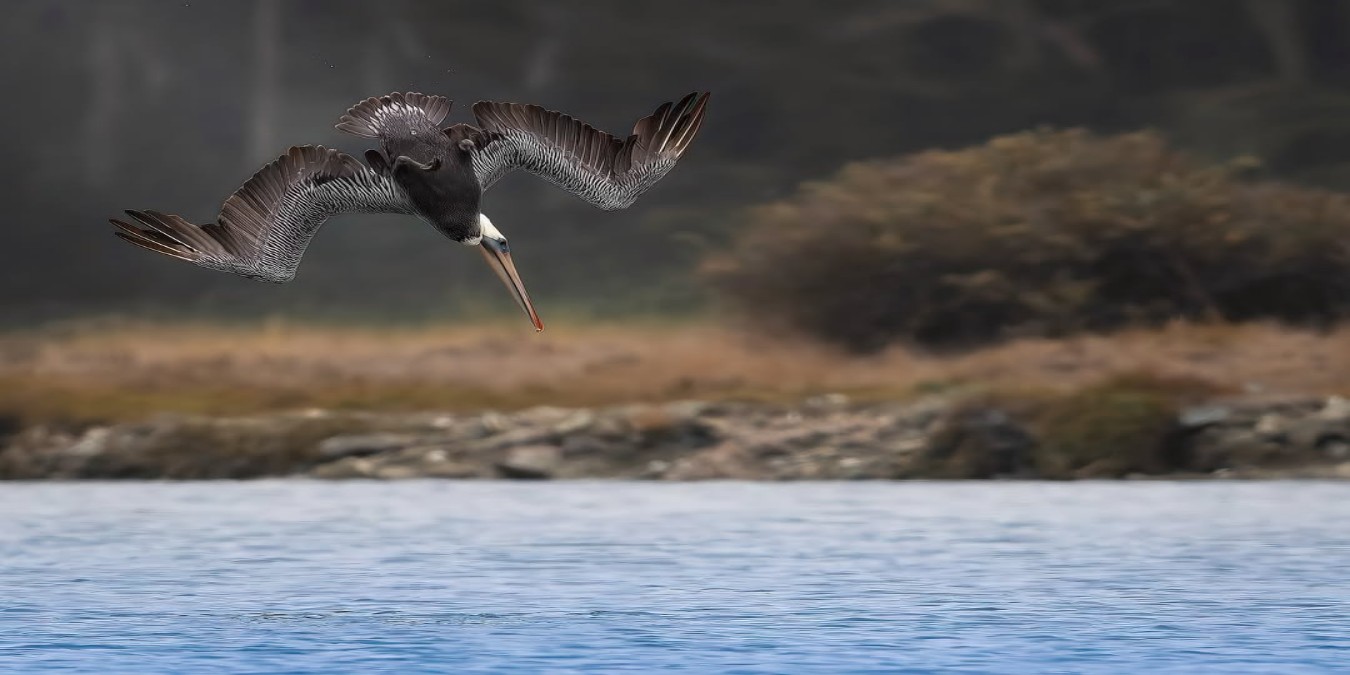Heavy-winged and unmistakable, the Brown Pelican moves through Tobago’s coastal skies like an ancient guardian of the sea. With its oversized bill and expandable pouch, it is both awkward and majestic, a creature shaped by the ocean’s demands, sculpted by salt wind and time.
Locals call it the “Pillikin,” though the name truly belongs to smaller birds. But here, along the shores of Plymouth and across the wide blue hush of the Gulf of Paria, this seabird has long claimed the title through presence alone. It glides low over the water, wings stretched wide, eyes scanning the surface with quiet intensity, a hunter wrapped in patience.
And then, without warning, the sky folds.
The pelican tilts, narrows to a blade, and plunges a living arrow piercing the sea. Water explodes, then settles. A moment later, the bird rises again, pouch swollen with wriggling silver, triumph hanging from its beak. Around it, gulls and terns swarm like thieves of the air, darting and calling, hoping to steal what the pelican has claimed.
When not hunting, it drifts on the surface like a weathered boat, unbothered by the tide, or perches in trees along the shore, heavy and still, resting from its long communion with the sea. Its crown glows pale in the sun, a soft white against the rich browns of its body, and behind its head, a band of warm chestnut whispers of its age and wisdom.
Yet this coastal giant is not without danger. Nests tucked away in trees are often disturbed, and the quiet sanctuaries it depends on grow fewer each year. Still, the pelican returns day after day, season after season, a living symbol of Tobago’s wild rhythm, where land meets sea and the sky remembers its oldest stories.
The Brown Pelican is not just a bird.
It is the sea in motion, a breath of salt and sky, a keeper of coastal memory, gliding through Tobago’s horizon like a myth that refuses to fade.


Comments